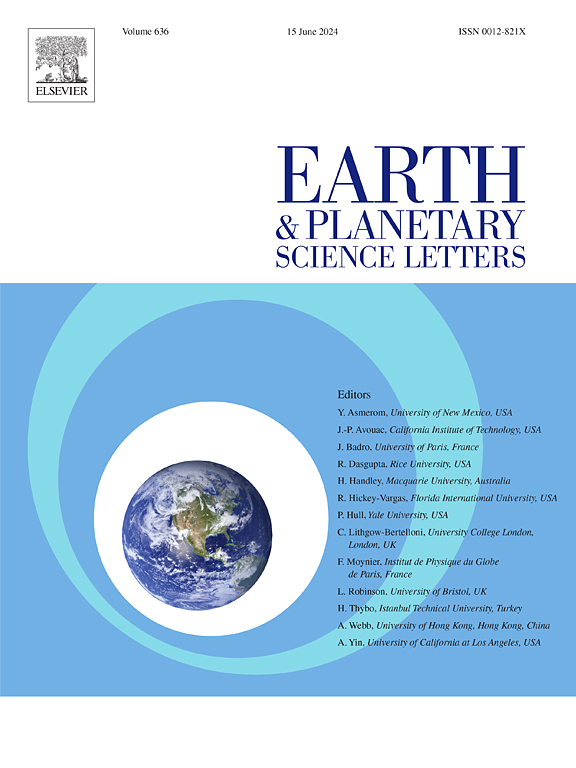More than an age: U-Pb dating constrains alteration of Precambrian carbonates
IF 4.8
1区 地球科学
Q1 GEOCHEMISTRY & GEOPHYSICS
引用次数: 0
Abstract
The Campbellrand Platform (South Africa) is one of the best-preserved carbonate archives for studying Neoarchean marine environments immediately preceding the Great Oxygenation Event. These carbonates preserve depositional structure and textures, like a variety of dolomitized stromatolites and microbialites encased in herringbone calcite – a type of early marine calcite cement. The preservation of depositional textures in Precambrian carbonates is often used to argue for the retention of primary paleoenvironmental signals, which are, in turn, used to infer the conditions in ancient surface environments including the composition of seawater and climate. Here we tested this idea using laser-ablation ICP-MS U-Pb to independently date specific carbonate mineral fabrics from the ∼2.58 Ga Reivilo Formation and ∼2.52 Ga Gamohaan Formation at the Campbellrand platform in the Northern Cape Province of South Africa. U-Pb dates of dolomite fabrics are mostly younger than their expected stratigraphic age and their initial 207Pb/206Pb compositions follow the modeled terrestrial Pb-isotope evolution trend. These results suggested that dolomite fabrics have experienced open-system alteration in which diagenetic fluids carrying a terrestrial signature reset U-Pb dates and overprinted initial Pb-isotope compositions during deep diagenesis. In contrast, herringbone calcite fabrics yielded near-stratigraphic U-Pb dates that clustered around an average of 2403 (±93) Ma and initial 207Pb/206Pb values that plotted below the modeled terrestrial Pb-isotope evolution trend. These results revealed that Neoarchean herringbone calcite fabrics were minimally altered in a closed system with respect to Pb, at deposition or some 10-100 Ma later, and have remained closed with respect to both U and Pb since. The closed-system behavior of a highly sensitive system like U-Pb in herringbone calcites serves as an independent validation for the reliability of herringbone calcites as useful recorders of marine environments. U-Pb dating of ancient carbonates thus offers a complementary tool for petrographic analyses that can identify and evaluate the timing and nature of alteration (open or closed system) of primary geochemical signatures in Precambrian carbonates.
求助全文
约1分钟内获得全文
求助全文
来源期刊

Earth and Planetary Science Letters
地学-地球化学与地球物理
CiteScore
10.30
自引率
5.70%
发文量
475
审稿时长
2.8 months
期刊介绍:
Earth and Planetary Science Letters (EPSL) is a leading journal for researchers across the entire Earth and planetary sciences community. It publishes concise, exciting, high-impact articles ("Letters") of broad interest. Its focus is on physical and chemical processes, the evolution and general properties of the Earth and planets - from their deep interiors to their atmospheres. EPSL also includes a Frontiers section, featuring invited high-profile synthesis articles by leading experts on timely topics to bring cutting-edge research to the wider community.
 求助内容:
求助内容: 应助结果提醒方式:
应助结果提醒方式:


